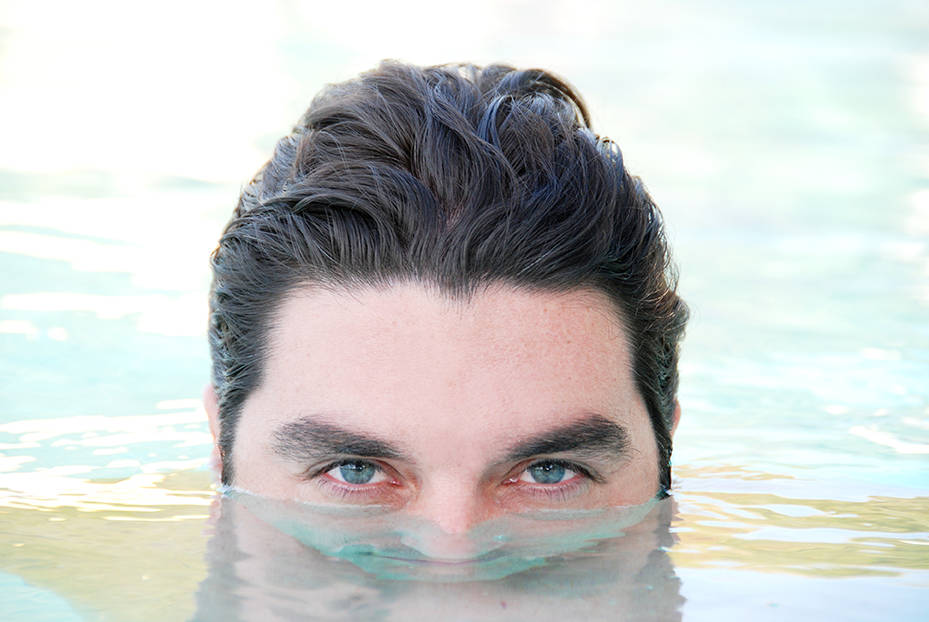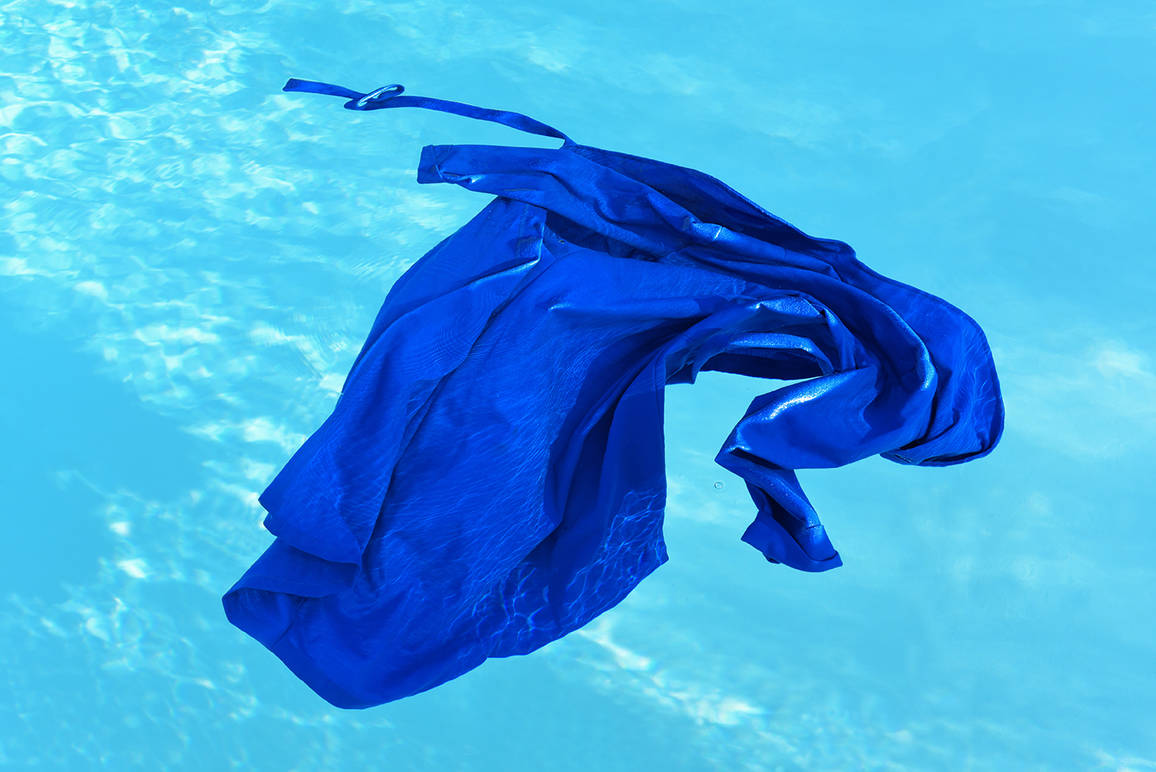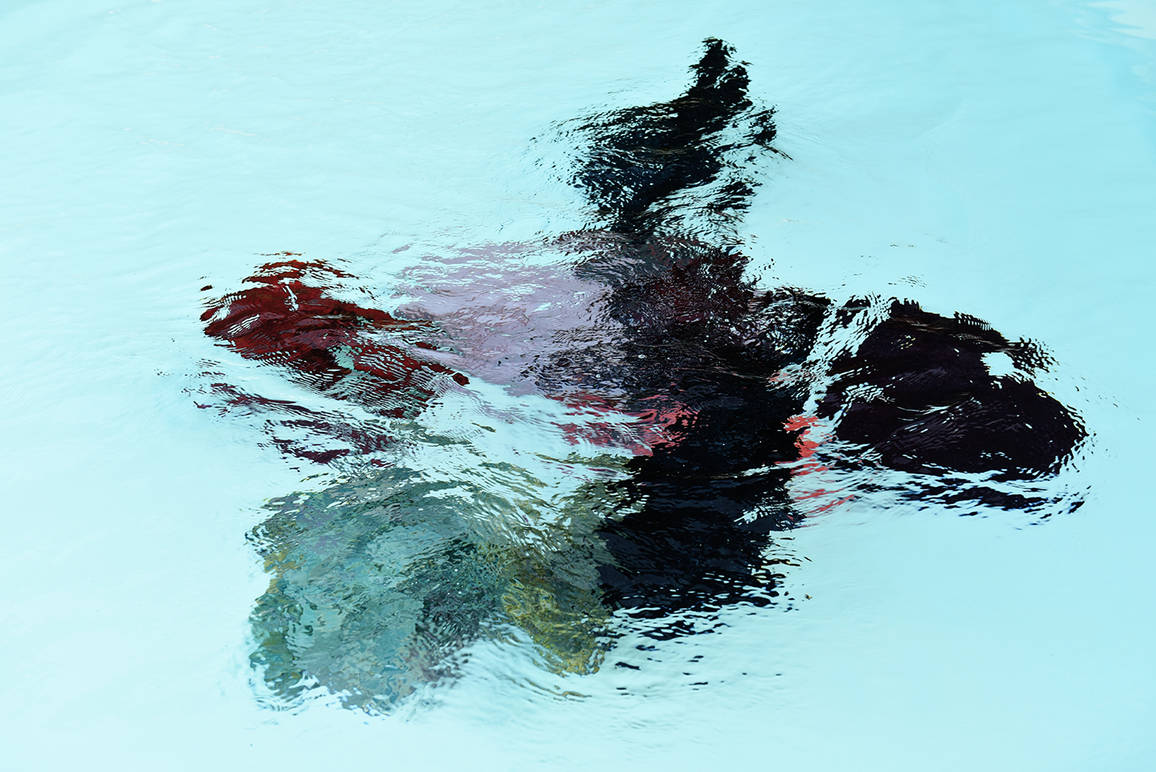Rocchi Bilancini’s “Migration” Comes to NYU
34 photographs line the halls of Casa Italiana. At first glance, you see the beautiful colors, but a closer look provides a depth of understanding.
Loss and Hope
All of the photos are based around water with various clothing items floating solitarily in the stillness. There is a story of loss, and a story of hope behind the images. Migration encompasses the theme of abandoning everything you know to find a better life. This message is particularly poignant in Italy and the United States presently, but also in the history of both the countries. Memories are all migrants can take with them, and their trek is wiped away quickly without a trace by the waves they crossed.
Carlo Rocchi Bilancini, the photographer, thinks back to the Italian migrants who were seeking a more promising future leaving their families and everything they knew behind. This story reflects on the current refugees who are trying to find a safe haven in Europe. The difficult, tumultuous journey stained with fear and pain is the perseverance for survival.
Meeting Carlo Rocchi Bilancini
We had the chance to sit down with the artist and discover more about his aesthetic, his background and the current exhibition at Casa Italiana.
Tell us more about “Migration”. How did you come up with the concept and what does it mean to you to present it here in New York City?
“Migration” is made up of clothes floating in water (a pool) that still maintain a human form. It evokes a human presence that is absent. It references loss which is a concept that we all have to deal with at some point, and a feeling that resonates very deeply within myself. I am very happy to bring it here to New York because I don’t think there’s a more ideal place to talk about the concept of migration, also seeing how it was born from a sense of loss and memory, something that every migrant feels. The capacity of needing to adapt to a new place and a new reality doesn’t only refer to historical migrations, but also to the refugee crisis going on in Europe and elsewhere. I presented this project to Stefano Albertini, Director of Casa Italiana, and he liked it a lot, so he made it happen.”
"Water is the medium of change, bringing metamorphosis in its wake. Here there is a vanishing, a transmigration. Before long, these shapes will be nothing more than ripples in time.” Said acclaimed writer, editor, translator and a lover for al things Italian Jill Foulston, about your work. Can you elaborate on that? What does water symbolize for you.
"Water is a very strong element that has the possibility to mutate, dissolving and changing form according to the situation, but without changing identity. Also in my other series of photographs “Dissolvenze”, water is the element of transformation and transmutation. “Dissolvenze” is also clothes floating, only they become more abstract. They change form, and are no longer recognizable. We need to accept change."
Let’s talk about your origins and background, and how they influenced you as an artist.
"I’ve always had a predisposition for aestheticism and beauty. I consider myself self-taught because, in reality, I graduated with a degree in economics and business. I had the luck of living in Todi, a small city in Umbria that we say is a pole that artists gravitate to, artists like Piero d’Orazio, and the photojournalist of “Life” magazine, Enrico Sarsini. But also directors like Pupi Avati with whom I collaborated for the movies he shot in Umbria, such as Magnificat, The Knights of the Quest and The Mysterious Enchanter."
A kaleidoscope of artistic encounters inspired Rocchi to create his unique visual style. His "migrations" took him also far away from his hometown in Todi to Milan where he got in touch with photographer Antonia Mulas, wife and assistant of photographer Ugo Mulas. Another crucial encounter was with the iconic actress Anita Ekberg, star of La Dolce Vita, where the photographer had the privilege to capture her in a series of shots in her house in Genzano, Rome.
Some of these illustrious meetings are emblazoned in the exhibition, “Pesci fuor d’acqua”(Fish out of Water). Can you tell us about it?
“I published “Pesci fuor d’acqua” with Skira Editore which I then followed up with an exhibit by the same name in Venice. It consists of 50 portraits in color of people from the art and performance world including, Marina Ripa di Meana, Lindsay Kemp, the son of Alighiero Boetti, Matteo Boetti, who has a gallery in Todi; Jack Sal, and Antonella Zazzera, but there were also regular people featured wearing clothes that represented their professional careers in a swimming pool.”
Again the theme of water, which is either stagnant like in “Pesci fuor d’Acqua,” or transformative like in “Migration,” seems to identify the dual nature of Bilancini’s spirit as an artist. One is attached and rooted to his land and the other one is fascinated by the necessity of change and contaminations.
“I am very attached to my hometown in Umbria, which is a wonderful land full of spirituality and art treasures. But at the beginning, I wasn't taken too seriously as an artist. Sometimes Italian provincialism can be counterproductive for an artist, and sometimes you need to be successful abroad before being valued in Italy. I love my roots, but travelling and experiencing the world is fundamental for my profession.”
Migration is on display at NYU’s Casa Italiana Zerilli-Marimò until March 23. It is open Monday through Friday from 10am to 5pm. For more info click here>>>>
----
For more information on Carlo Rocchi Bilancini and his works, visit his website here >>>>













































i-Italy
Facebook
Google+
This work may not be reproduced, in whole or in part, without prior written permission.
Questo lavoro non può essere riprodotto, in tutto o in parte, senza permesso scritto.